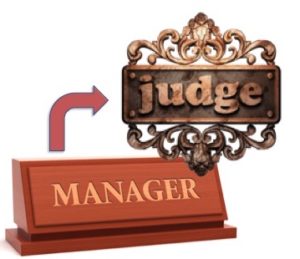By Dr. Ken Broda Bahm:

Litigation is often complex and often unwanted. So sometimes, you want someone to manage that litigation to a swift and clear conclusion. Other times, however, the forum of the trial is actually what is best for your client. As noted by many, trial judges are increasingly seeing it as their role to manage rather than to try cases, and the pendulum is swinging away from trial as the method of resolving disputes. In a recent article (Engstrom, 2018), a Stanford law professor shares the grim statistical picture: In the past 50 years, the number of federal civil trials has halved, even as the caseload has grown five-fold. At the state level, where the vast majority of civil litigation takes place, the rate of cases making it to trial is below one percent, with many jurisdictions reporting no trials at all in the past year.
According to Professor Engstrom, however, the reduction in the number of trials is only part of the problem. “The other part of the story,” she says, is that “the few that remain also appear to be shrinking.” The management orientation of judges, she says, leads to “a willingness on the part of trial judges to take ad hoc, improvisational action in the name of administrative efficiency and effective docket management—judges seem to be taking a more active role during trials in an effort to speed these proceedings along.” In other words, “We are witnessing both the disappearance and the downsizing of the American civil trial.” Litigators cannot always control the factors that cause the avoidance and reduction of the trial, but can sometimes influence those factors. When trial seems like a good option for your client, lawyers will want to advocate for it. Inspired by Professor Engstrom’s article, this post shares a few thoughts on how to do that.
Make Sure Your Judge Knows What You Want
These days especially, the judge or magistrate wearing the “litigation manager” hat might be assuming that everyone wants to avoid trial if at all possible. For that reason, their scheduling, rulings, and overarching process might be a reflection of that assumption. So, if you feel that your client stands a better chance in trial than in other forms of dispute resolution, say so. Make sure that your judge knows that: In this case at least, you see a trial as an appropriate and effective way to resolve the dispute. You won’t always get there, of course, but a conveyed attitude of “We’re ready and eager for trial” can be a very good posture to have.
Include Efficiency as Part of Your Theme
That decline in the number of trials, as well as the slimming down of the trials that do occur, are due in part to a litigation manager’s mindset that says that proceeding all the way to trial is a failure in dispute resolution, and not, for example, the ultimate point of the system. Professor Engstrom’s article advises litigants to push back against the sometimes arbitrary limits within trial, and not take it for granted that anything that reduces the length or complexity of litigation is a good thing. At the same time, the efficiency of a trial should be part of the selling point. After all, compared to its historical alternatives of a long-running dispute or even the use of force, the trial finds its origin as an efficient way to resolve a disagreement. The trial also has value in being grounded in the logic of the law and the rules of evidence, as well as the voice of the community. But as a response to the perceptions, at least, that trials have become cumbersome and bloated, the theme of efficient resolution should be part of your communications with the court. Compared to interminable settlement discussions and increasingly cumbersome arbitration or mediation, the notion of a week or so of evidence followed by a clear answer does still have some appeal.
Don’t Create Headaches
The final rule of thumb is to not be the party whose behavior or advocacy makes the judge wish to avoid a trial. Whatever it is that has caused this judge to dread trials, don’t be that. Of course, no attorney consciously sets out to annoy their trial judge. At the same time, the trial lawyer’s mindset might be to do whatever the judge allows you to get away with. The balance to work toward is to be zealous when it comes to advocating on behalf of your client, but to be a breeze when it comes to working with the court toward a full and fair trial on the merits of your case. Bottom line, you don’t want to add to the problem.
More Posts on Judicial Attitudes:
- Worry About Biased Judges Too (Another Argument for a Restored Civil Jury)
- Fight for the Civil Jury
- Argue With the Other Side, Not With the Judge
Engstrom, N. F. (2018). The Diminished Trial. Fordham L. Rev., 86, 2131.